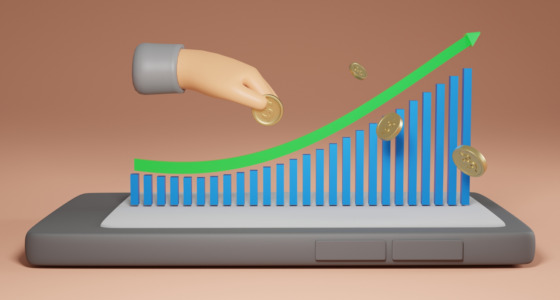

S&P 500 is a stock market index and is one of the key barometers of the stock market’s health. Investors widely use the index to identify how strong the stock market is. Besides being an economic health benchmark, S&P 500 can be used for investments through ETFs, mutual funds, and individual stocks.
The first US mutual fund that tracked S&P 500 was introduced in 1976 by Vanguard, while the first ETF appeared in 1993 by a subsidiary of AMEX.
Read on to discover how these instruments work.
What is S&P 500?
S&P 500 is a stock market index. It consists of 505 stocks of the 500 largest US public companies traded on the New York Stock Exchange and NASDAQ. The included companies represent around 80% of the US stock market’s overall value.
The index is calculated as a sum of the stocks’ market capitalizations. At the same time, it’s weighted by market cap; that is, stocks with the largest capitalization have a stronger impact on the index’s performance.
As S&P 500 is just an index, not a financial instrument, you can’t invest in it directly. However, there are instruments that track it closely and replicate its performance.
Invest through mutual funds and ETFs
The most common way to invest in S&P 500 is to invest in an ETF (exchange-traded fund) or a mutual fund that tracks the index.
S&P 500 and ETFs
- An ETF is a fund traded like a usual stock, and it can be purchased and sold on an exchange. This means that an ETF’s price changes during the day.
- ETFs can be managed by portfolio managers. However, they are mostly pegged to an index’s performance and serve as a passive investment.
- One of the ETFs’ advantages is that there is no minimum initial investment. An ETF is bought as a whole share.
To invest in an ETF, you can apply to a broker. There are standard and discount brokers. The latter doesn’t implement commissions on passive ETFs. Some brokers may have minimum-investment requirements.
There are numerous exchange-traded funds you can choose from. Read analysts’ overviews to select the right one.
S&P 500 and mutual funds
- Unlike ETFs, mutual funds can be purchased only once per day at the day’s closing price.
- Mutual funds are usually operated by portfolio managers. However, they can be both active and indexed (passive).
- Mutual funds typically have higher fees than ETFs. Also, usually, they are based not on the fund’s share price but have a flat dollar price.
To invest in a mutual fund, you can apply to a brokerage firm or directly to a mutual fund. Mutual funds usually have minimum-investment requirements. Investing in mutual funds, you can use the services of advisors or portfolio managers.
How to choose an ETF and a mutual fund
There are some factors you should consider before investing in a fund.
Fund performance
As numerous funds track S&P 500 performance, you should choose one that performs better than others. It may not be very clear because funds track the S&P 500 index, so they perform similarly. However, funds allocate investments slightly differently from an index’s allocation. Also, different cost ratios can add up over time.
Costs
Pay attention to the commissions you will have to pay to a brokerage firm or directly to a fund. The commissions should be low so they don’t exceed your returns.
Loads
Some mutual funds can be bought and sold for free, while some apply front-end or back-end loads. The front-end load is charged when you purchase a fund, and the back-end load is applied when you sell a fund.

Invest through individual stocks
This option isn’t an accurate investment in the S&P 500 index. Here, you buy stocks of companies included in the index. It’s clear you won’t be able to invest in 500 companies. However, you can choose stocks of those with the largest market cap that have a stronger impact on the index’s performance.
Stocks can also be purchased through a broker or directly through their issuers.
Summing up
The S&P 500 index is one of the most popular indexes which analysts and investors around the globe use. It signals the world’s economic problems and is used to predict the performance of other financial markets. Using ETF, mutual fund, or stock instruments, you can invest in the 500 largest US public companies at once.






